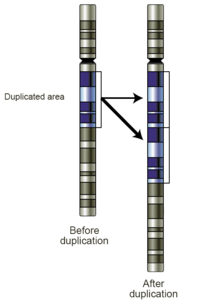
Photo from wikipedia
It is now well recognized that members of the genus Streptomyces still harbor a large number of cryptic BGCs in their genomes, which are mostly silent under laboratory culture conditions.… Click to show full abstract
It is now well recognized that members of the genus Streptomyces still harbor a large number of cryptic BGCs in their genomes, which are mostly silent under laboratory culture conditions. Activation of transcriptionally silent BGCs is technically challenging and thus forms a bottleneck when taking a gene-first approach for the discovery of new natural products. ABSTRACT The genus Streptomyces is one of the richest sources of secondary metabolite biosynthetic gene clusters (BGCs). Sequencing of a large number of genomes has provided evidence that this well-known bacterial genus still harbors a large number of cryptic BGCs, and their metabolites are yet to be discovered. When taking a gene-first approach for new natural product discovery, BGC prioritization would be the most crucial step for the discovery of novel chemotypes. We hypothesized that strains with a greater number of BGCs would also contain a greater number of silent unique BGCs due to the presence of complex regulatory systems. Based on this hypothesis, we employed a comparative genomics approach to identify a specific Streptomyces phylogenetic lineage with the highest and yet-uncharacterized biosynthetic potential. A comparison of BGC abundance and genome size across 158 phylogenetically diverse Streptomyces type strains identified that members of the phylogenetic group characterized by the formation of rugose-ornamented spores possess the greatest number of BGCs (average, 50 BGCs) and also the largest genomes (average, 11.5 Mb). The study of genetic and biosynthetic diversities using comparative genomics of 11 sequenced genomes and a genetic similarity network analysis of BGCs suggested that members of this group carry a large number of unique BGCs, the majority of which are cryptic and not associated with any known natural product. We believe that members of this Streptomyces phylogenetic group possess a remarkable biosynthetic potential and thus would be a good target for a metabolite characterization study that could lead to the discovery of novel chemotypes. IMPORTANCE It is now well recognized that members of the genus Streptomyces still harbor a large number of cryptic BGCs in their genomes, which are mostly silent under laboratory culture conditions. Activation of transcriptionally silent BGCs is technically challenging and thus forms a bottleneck when taking a gene-first approach for the discovery of new natural products. Thus, it is important to focus activation efforts on strains with BGCs that have the potential to produce novel metabolites. The clade-level analysis of biosynthetic diversity could provide insights into the relationship between phylogenetic lineage and biosynthetic diversity. By exploring BGC abundance in relation to Streptomyces phylogeny, we identified a specific monophyletic lineage associated with the highest BGC abundance. Then, using a combined analysis of comparative genomics and a genetic network, we demonstrated that members of this lineage are genetically and biosynthetically diverse, contain a large number of cryptic BGCs with novel genotypes, and thus would be a good target for metabolite characterization studies.
Journal Title: mSystems
Year Published: 2021
Link to full text (if available)
Share on Social Media: Sign Up to like & get
recommendations!